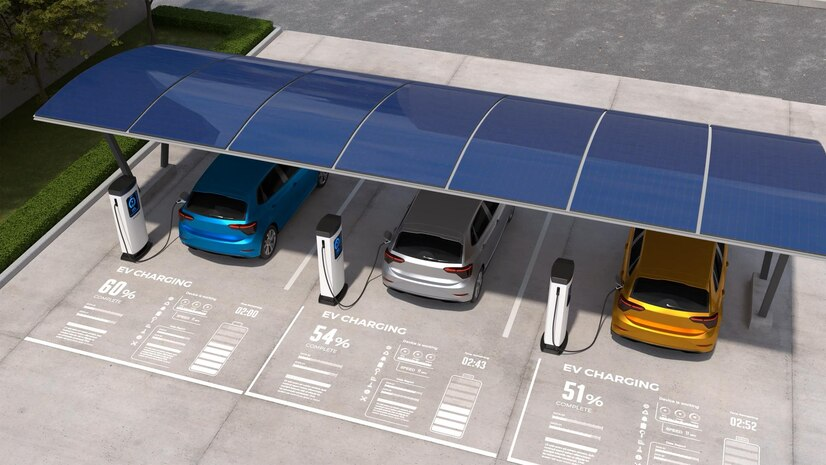The rapid growth of electric vehicles (EVs) has led to an increased demand for reliable and scalable charging infrastructure. A critical factor in ensuring seamless EV charging operations is the communication protocol that connects charging stations with central management systems. Among the most widely adopted standards is the Open Charge Point Protocol (OCPP) 1.6, which plays a pivotal role in enabling interoperability, flexibility, and innovation in the EV charging ecosystem.
This article explores the significance of OCPP 1.6, its benefits for businesses and charging network operators, and why it remains a foundational standard for modern EV charging infrastructure.

The Open Charge Point Protocol (OCPP) 1.6 is an open communication standard that facilitates interaction between EV charging stations and central management systems (CMS), also known as Charge Point Management Systems (CPMS). Unlike proprietary protocols that lock users into a single vendor’s ecosystem, OCPP 1.6 ensures that charging stations from different manufacturers can seamlessly integrate with various back-end software platforms.
Interoperability – OCPP 1.6 allows EV chargers and software systems from different vendors to communicate efficiently, eliminating vendor lock-in.
Remote Monitoring & Control – Operators can remotely manage charging sessions, perform diagnostics, and apply firmware updates.
Smart Charging Capabilities – Supports load balancing, dynamic power adjustment, and integration with renewable energy sources.
Enhanced Security – Introduces improved authentication and encryption measures compared to earlier versions.
Scalability – Designed to support large-scale deployments, making it ideal for commercial and public charging networks.
By adopting OCPP 1.6-compliant chargers, businesses and charging network operators gain the flexibility to choose hardware and software independently, fostering competition and innovation in the industry.
One of the biggest advantages of OCPP 1.6 is that it prevents businesses from being tied to a single manufacturer. Proprietary charging networks often require operators to use specific hardware and software, limiting flexibility and increasing long-term costs.
With OCPP 1.6 compliance, businesses can:
Select chargers from multiple manufacturers based on cost, features, and reliability.
Choose a back-end software platform that best fits their operational needs.
Easily switch software providers without replacing existing hardware.
This flexibility encourages competition, leading to better pricing, improved technology, and more innovative solutions in the EV charging market.
Technology in the EV sector evolves rapidly. OCPP 1.6 ensures that charging stations remain compatible with future advancements, including:
Vehicle-to-Grid (V2G) integration – Enables bidirectional charging, allowing EVs to supply power back to the grid.
Advanced energy management – Supports dynamic load balancing to optimize power distribution across multiple chargers.
Integration with smart grids – Facilitates demand-response programs that adjust charging speeds based on grid conditions.
By investing in OCPP 1.6-compliant chargers, businesses can avoid costly hardware upgrades as new features and standards emerge.
For charging operators, OCPP 1.6 provides robust tools to streamline operations:
Remote diagnostics & troubleshooting – Reduces downtime by allowing operators to identify and resolve issues without on-site visits.
Real-time monitoring – Tracks charging sessions, energy usage, and revenue generation.
Automated billing & authentication – Supports RFID, mobile apps, and plug-and-charge functionalities for seamless user access.
These features improve reliability, reduce maintenance costs, and enhance the overall charging experience for EV drivers.
Sustainability is a growing priority for consumers. Businesses that install OCPP 1.6-compatible EV chargers demonstrate a commitment to green energy, enhancing brand reputation and attracting environmentally aware customers.
Retail stores & restaurants – EV charging can increase dwell time, leading to higher sales.
Hotels & workplaces – Offering charging as an amenity improves customer and employee satisfaction.
Fleet operators – Efficient charging management reduces operational costs and supports electrification goals.
EV charging stations can generate additional income through:
Pay-per-use charging – Businesses can set pricing models (per kWh, per minute, or flat fees).
Membership/subscription models – Recurring revenue from regular users.
Advertising & partnerships – Charging stations can display promotions or partner with energy providers.
Many governments offer grants, tax credits, or rebates for installing OCPP-compliant EV chargers. Compliance with open standards like OCPP 1.6 may also be required for eligibility in public funding programs.
While OCPP 2.0 introduces advanced features like ISO 15118 (Plug & Charge) and improved security, OCPP 1.6 remains the most widely deployed version due to its stability and broad compatibility.
When to Choose OCPP 1.6:
Cost-effectiveness – OCPP 1.6 chargers are often more affordable.
Proven reliability – Extensive real-world deployment ensures stability.
Existing infrastructure compatibility – Many networks still operate on OCPP 1.6.
When to Consider OCPP 2.0:
Future-ready needs – If advanced features like Plug & Charge are critical.
High-security requirements – OCPP 2.0 offers stronger encryption.
For most businesses, OCPP 1.6 provides the best balance of functionality, cost, and compatibility.
The OCPP 1.6 protocol is a cornerstone of modern EV charging infrastructure, enabling interoperability, scalability, and innovation. By adopting OCPP 1.6-compliant chargers, businesses can:
Avoid vendor lock-in and reduce long-term costs.
Enhance customer experience with reliable, smart charging solutions.
Future-proof their infrastructure for emerging technologies.
Align with sustainability goals and attract eco-conscious consumers.
As the EV market continues to expand, OCPP 1.6 will remain a critical standard, ensuring seamless connectivity between charging stations and management systems. Investing in OCPP-compliant solutions today positions businesses for success in the evolving electric mobility landscape.
Evaluate charging needs – Determine the right number and type of chargers for your location.
Choose OCPP 1.6-compliant hardware – Partner with reputable manufacturers.
Select a robust CPMS – Ensure seamless integration and management.
Explore incentives – Check for government grants or utility rebates.
By embracing OCPP 1.6, businesses can build a scalable, efficient, and future-ready EV charging network that meets the demands of tomorrow’s electric mobility revolution.
Final Word: The shift to electric vehicles is accelerating, and OCPP 1.6 is a key enabler of a connected, interoperable charging ecosystem. Businesses that adopt this standard today will be well-positioned to thrive in the electrified future.